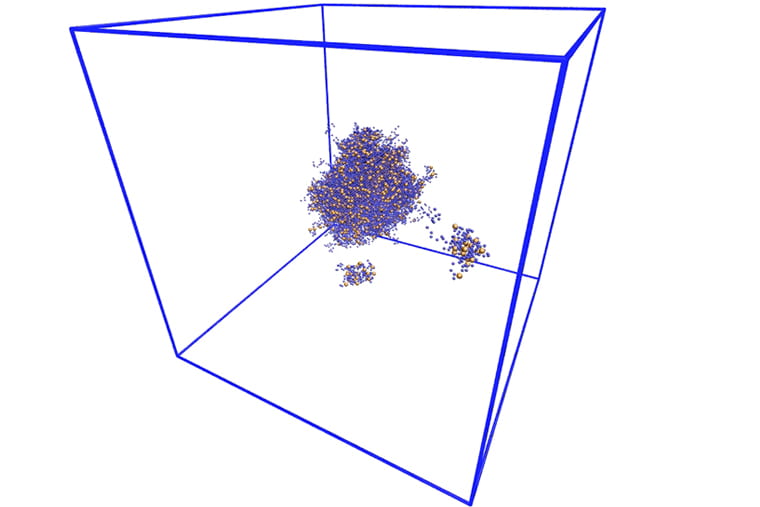Clumps of proteins inside cells are a common thread in many neurodegenerative diseases, including amyotrophic lateral sclerosis (ALS) or Lou Gehrig’s disease. These clumps, or solid aggregates of proteins, appear to be the result of an abnormality in the process known as liquid-liquid phase separation (LLPS), in which individual proteins come together to form a liquid-like droplet.
To understand how the process goes awry, researchers need a better understanding of the mechanism that drives LLPS in the first place. What is it about any protein that would cause it to condense into a liquid?

Collaborative research between the Pappu Lab, led by Rohit Pappu in the McKelvey School of Engineering at Washington University in St. Louis, and the lab of Tanja Mittag at St. Jude Children’s Research Hospital has uncovered the key to translating the patterns written into specific types of protein sequences that contribute to LLPS.
Importantly, they also have uncovered how specific arrangements of amino acids, which stray from the pattern, can negatively impact phase separation and give rise to the formation of solid aggregates instead of liquids.
Their research was published in the February 7 issue of the journal Science.
When certain cells are stressed, which happens regularly, cellular response proteins condense into membraneless organelles — squishy, liquid-like droplets that have defined boundaries but no delimiting membranes.
The droplets form by LLPS, a phenomenon that is conceptually similar to the process by which oil and vinegar separate from one another, forming coexisting liquid droplets.
Although it is called phase separation, LLPS is really a process of coming together, or condensing. Loosely condensed proteins are in a liquid-type phase; the more tightly they are packed, the more solid they become.
Under some circumstances, often due to mutations, an errant process causes some of the material in these protein-rich droplets, also known as biomolecular condensates, to morph into more solid aggregates.
The condensation, in many cases, is driven by the intrinsically disordered regions (IDR) of the protein. These are stretches of the protein with no defined three-dimensional shape, and yet they feature prominently in key functional roles, especially in the brain.
Pappu, the Edwin H. Murty Professor of Engineering, and his coworkers had shown that certain parts of the IDRs were sticky — they had a tendency to stick to each other on the same protein, or on those nearby. These “stickers,” which are actually amino acids on the protein chain, and the material between them, called “spacers,” are the basis for the sticker-and-spacer model, a framework used to describe LLPS.
The collaboration, which involved Mittag’s team at St. Jude team, was driven by experiments performed in the Mittag lab to try to identify the key stickers that are responsible for driving phase separation. To do this, they started by observing interactions essentially down at single amino acid resolution using nuclear magnetic resonance spectroscopy.
The results of their experiments uncovered which amino acids were sticky, but couldn’t provide the kind of holistic picture needed to fully understand the relationship between stickers, spacers and LLPS.
That’s where Pappu’s team came in. Building on experimental data from Mittag’s team, Pappu joined forces with his colleague Alex Holehouse, who until the end of 2019 was a postdoctoral fellow in the Pappu lab and is now an assistant professor of biochemistry and molecular biophysics in the School of Medicine. Together, Pappu and Holehouse developed an open source computational approach known as PIMMS (Polymer Interactions in Multicomponent Mixtures) to arrive at a quantitative and predictive understanding of the interactions among stickers that drive phase separation.
Additional lab experiments at St. Jude were used to test and confirm their predictions.
